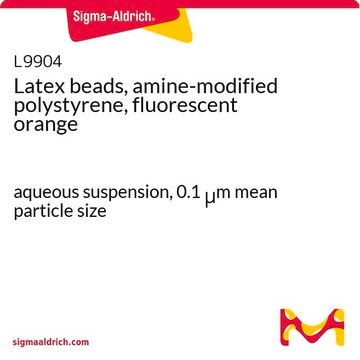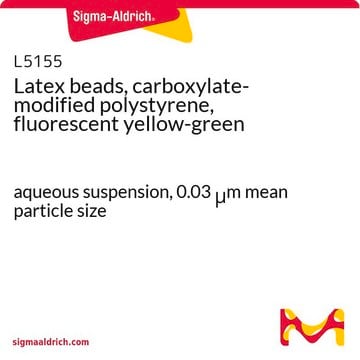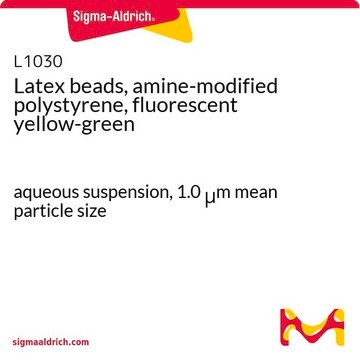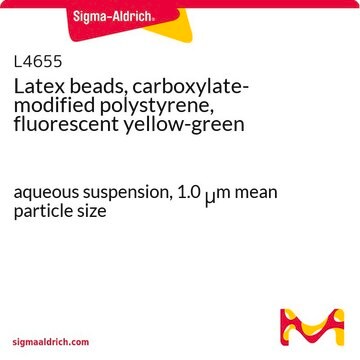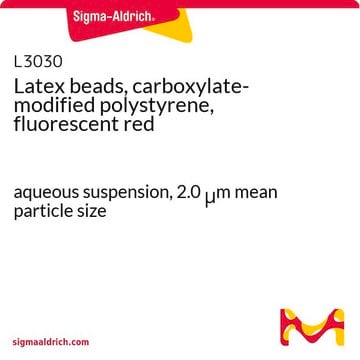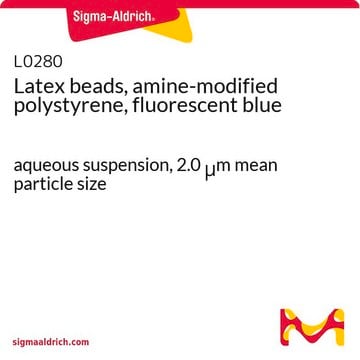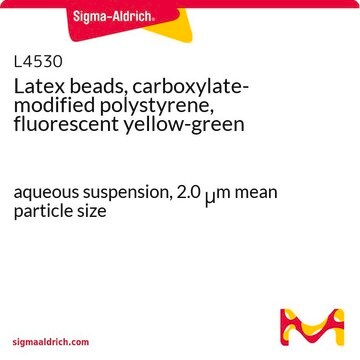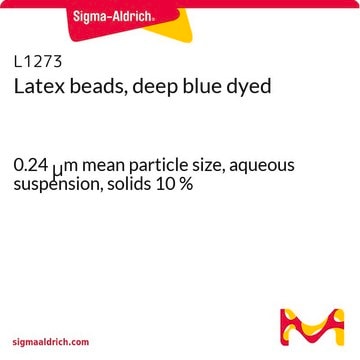L0780
Latex beads, amine-modified polystyrene, fluorescent blue
aqueous suspension, 0.05 μm mean particle size
About This Item
Recommended Products
form
aqueous suspension
Quality Level
composition
Solids, 2.5%
technique(s)
cell based assay: suitable
mean particle size
0.05 μm
fluorescence
λex ~360 nm; λem ~420 nm
application(s)
cell analysis
Looking for similar products? Visit Product Comparison Guide
Application
- to study its effects on the concentration-response relationship of bacterial cell viability
- in the preparation of nanoparticles
- as a model nanoparticle to study interactions with human blood and platelets
Biochem/physiol Actions
Storage Class Code
10 - Combustible liquids
WGK
WGK 3
Flash Point(F)
Not applicable
Flash Point(C)
Not applicable
Regulatory Listings
Regulatory Listings are mainly provided for chemical products. Only limited information can be provided here for non-chemical products. No entry means none of the components are listed. It is the user’s obligation to ensure the safe and legal use of the product.
JAN Code
L0780-VAR:
L0780-1ML:
L0780-BULK:
Certificates of Analysis (COA)
Search for Certificates of Analysis (COA) by entering the products Lot/Batch Number. Lot and Batch Numbers can be found on a product’s label following the words ‘Lot’ or ‘Batch’.
Already Own This Product?
Find documentation for the products that you have recently purchased in the Document Library.
Customers Also Viewed
Our team of scientists has experience in all areas of research including Life Science, Material Science, Chemical Synthesis, Chromatography, Analytical and many others.
Contact Technical Service
